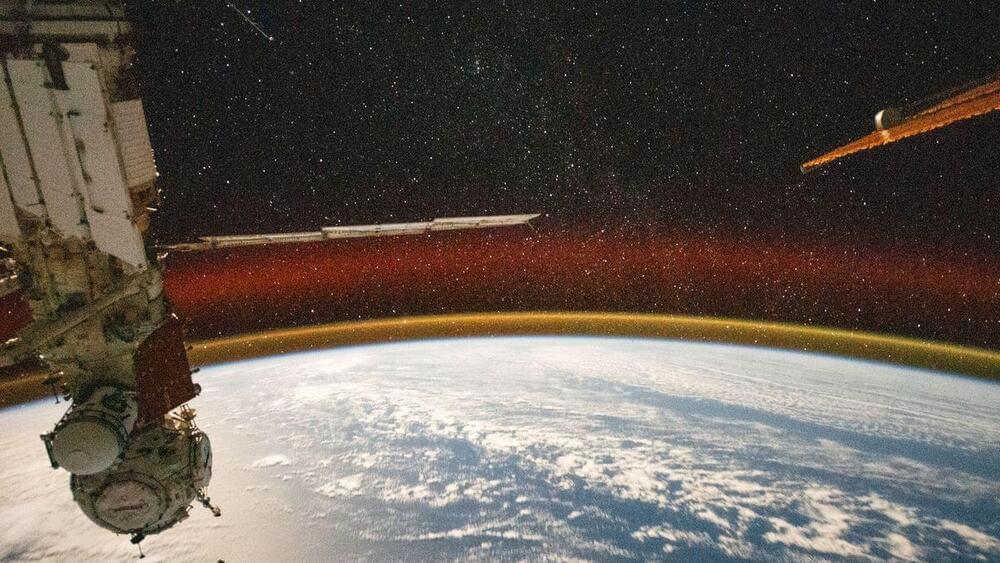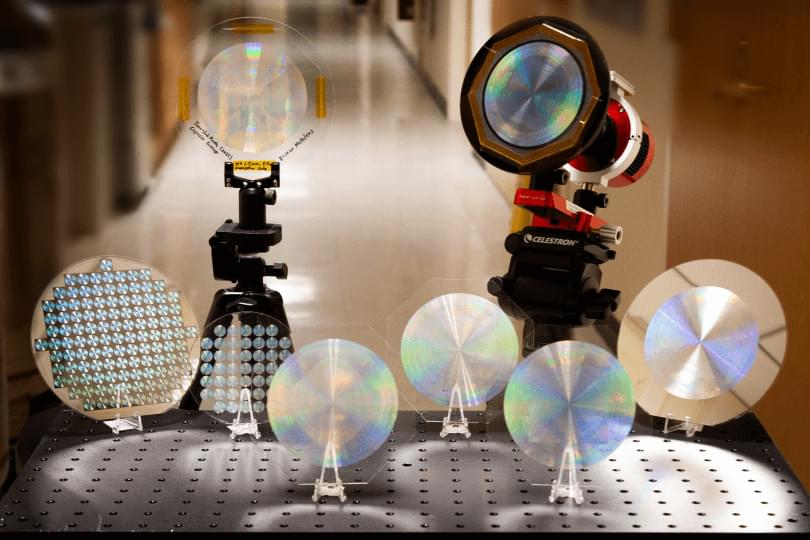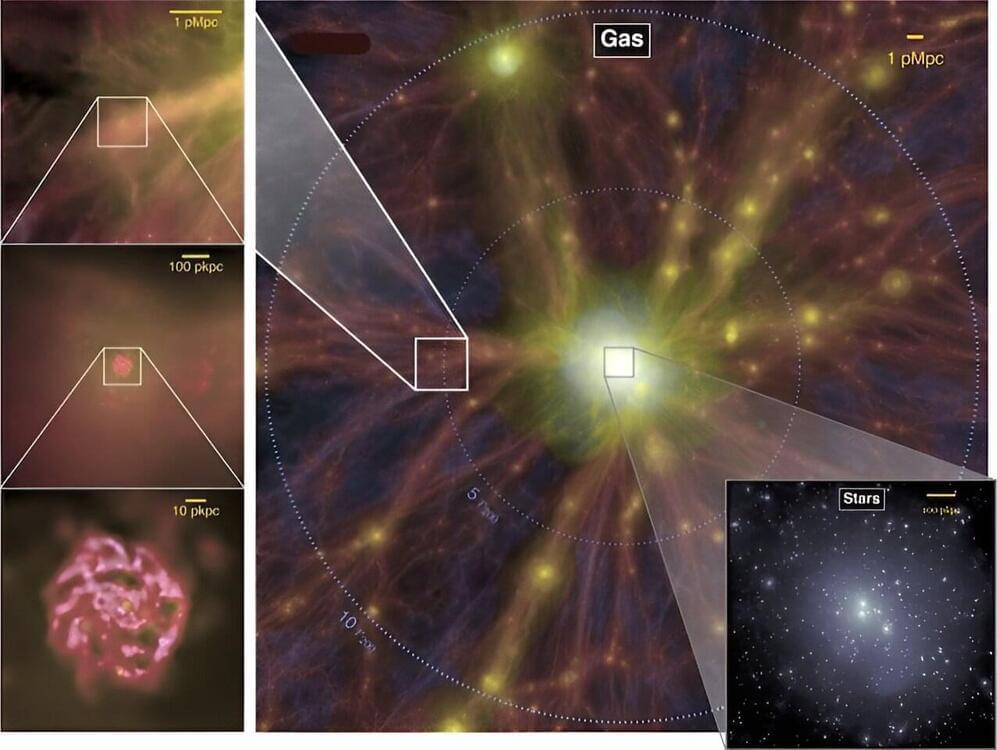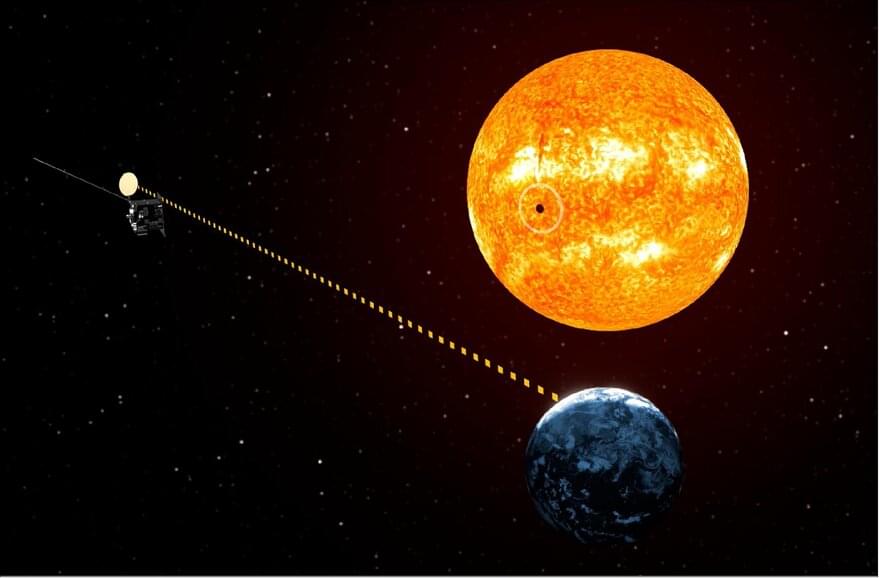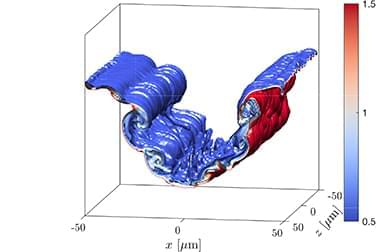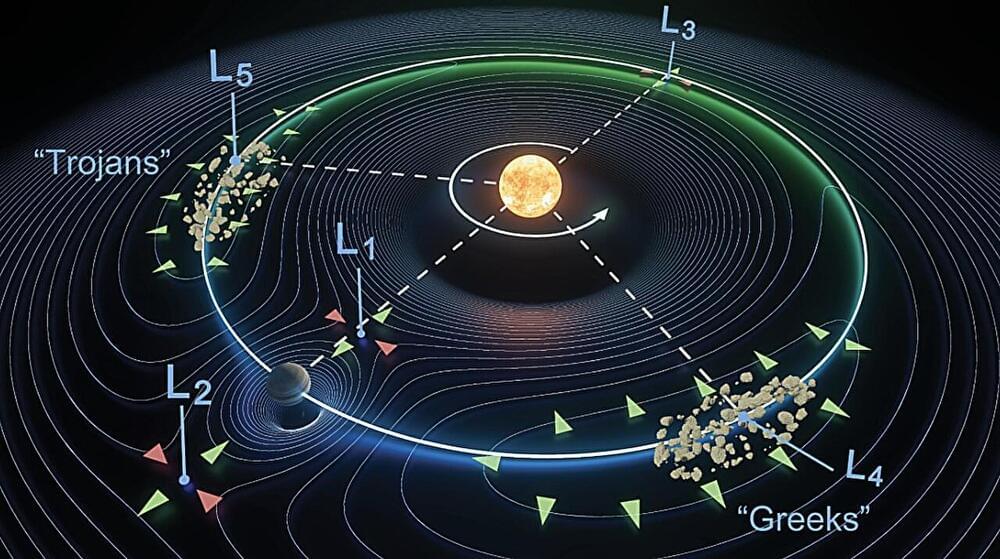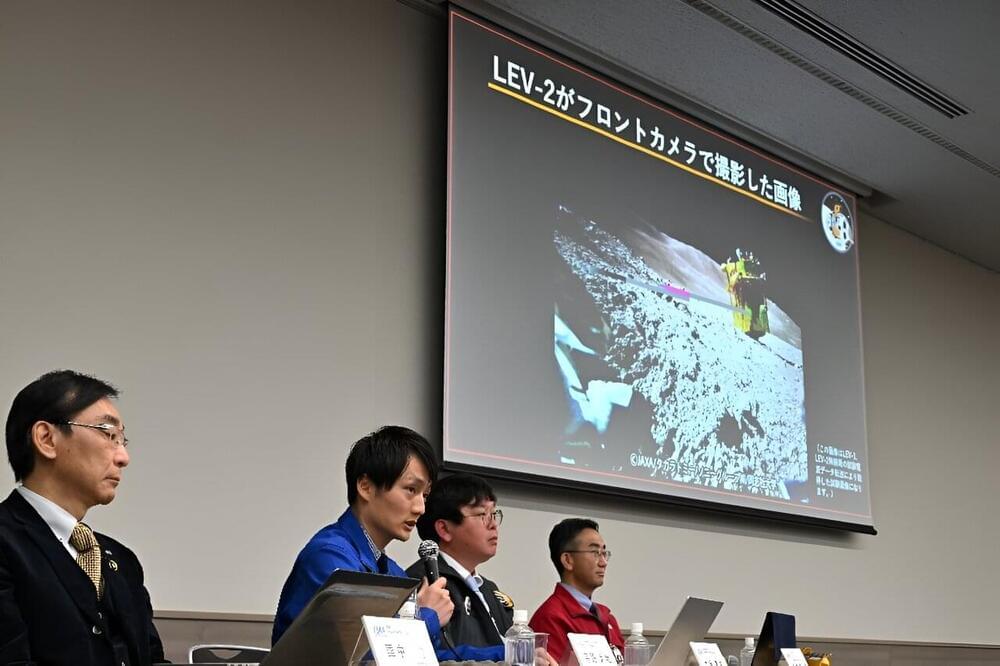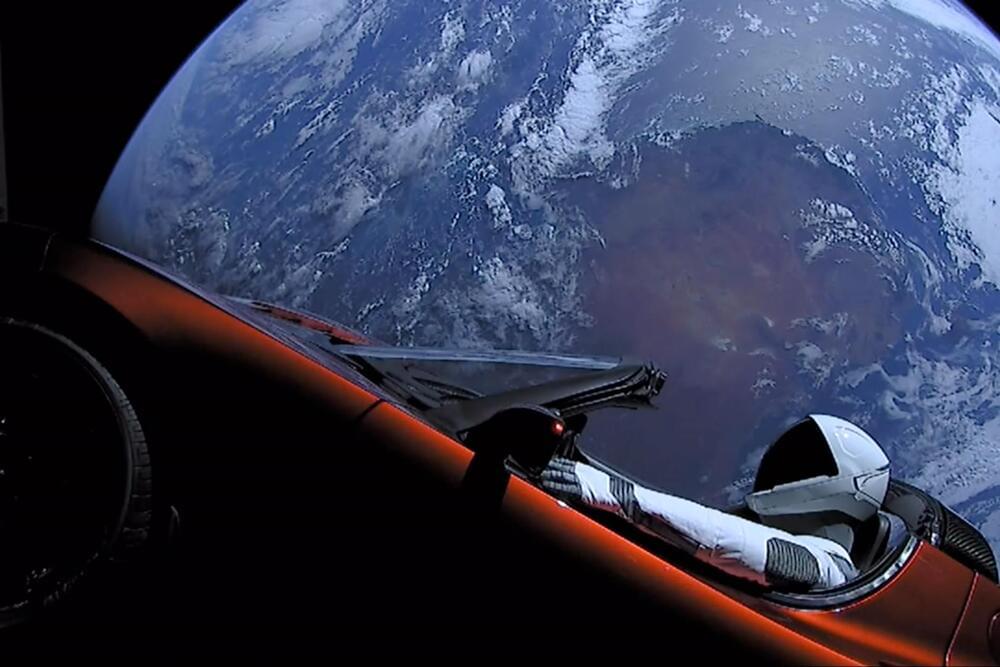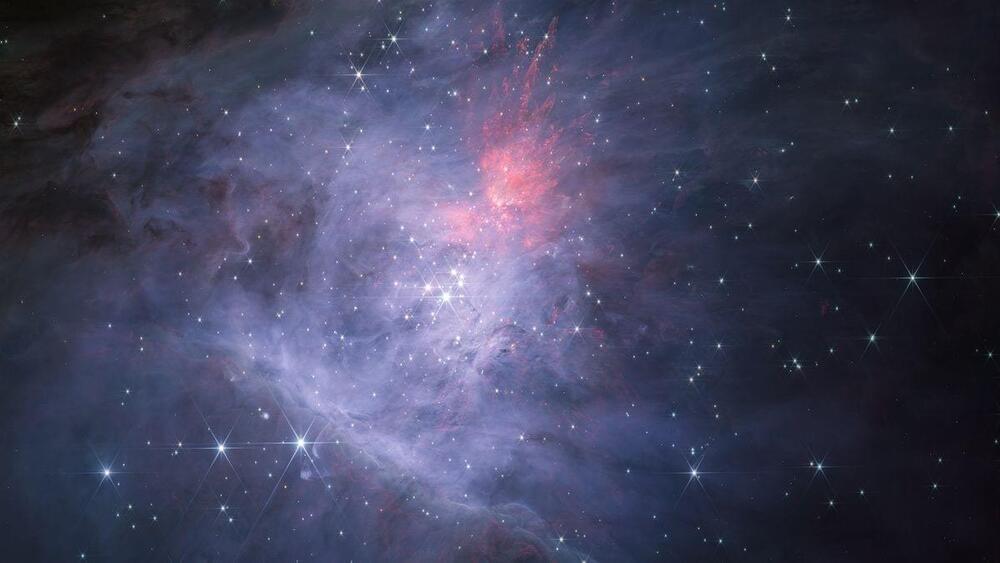Archive for the ‘space’ category: Page 130
Jan 31, 2024
The Metalens meets the Stars — Large, All-glass Metalens Images Sun, Moon and Nebulae
Posted by Natalie Chan in category: space
Metalenses have been used to image microscopic features of tissue and resolve details smaller than a wavelength of light. Now they are going bigger.
Researchers at the Harvard John A. Paulson School of Engineering and Applied Sciences (SEAS) have developed a 10-centimeter-diameter glass metalens that can image the sun, the moon and distant nebulae with high resolution.
It is the first all-glass, large-scale metalens in the visible wavelength that can be mass produced using conventional CMOS fabrication technology.
Jan 31, 2024
Researchers seek to understand how regions of ‘cosmic web’ influence behavior of galaxies
Posted by Genevieve Klien in categories: evolution, space
Researchers at the University of Kansas (KU) hope to better understand intricate mechanisms behind the evolution of galaxies, which travel through a “cosmic web” of different environments during their lifespans.
Gregory Rudnick, professor of physics & astronomy at KU, is leading a team to study “gas content and star-formation properties of galaxies” that are altered depending on where they are moving through the cosmos.
“The primary objective of this project is to comprehend the impact of environmental factors on the transformation of galaxies,” Rudnick said. “In the universe, galaxies are spread in a non-uniform distribution characterized by varying densities. These galaxies aggregate into large clusters, comprising hundreds to thousands of galaxies, as well as smaller groups, consisting of tens to hundreds of galaxies.”
Jan 31, 2024
ESA’s Vigil space weather mission balances operational and scientific demands
Posted by Saúl Morales Rodriguéz in categories: climatology, space
“We have not forgotten our science colleagues. In fact, they are important partners for the mission,” Giuseppe Mandorlo, Vigil project manager, said Jan. 29 at the American Meteorological Society annual meeting here.
Vigil will provide space weather data from sun-Earth Lagrange point 5. Data gathered from L5 could provide notice of four to five days of solar winds streaming toward Earth.
Data from Vigil sensors coupled with the National Oceanic and Atmospheric Administration’s Space Weather Follow-On (SWFO L1) mission destined for L1 promise to improve early warning of solar storms, Mandorlo said.
Jan 31, 2024
A method for examining ensemble averaging forms during the transition to turbulence in HED systems for application to RANS models
Posted by Saúl Morales Rodriguéz in categories: engineering, physics, space, supercomputing
Simulating KH-, RT-, or RM-driven mixing using direct numerical simulations (DNS) can be prohibitively expensive because all the spatial and temporal scales have to be resolved, making approaches such as Reynolds-averaged Navier–Stokes (RANS) often the more favorable engineering option for applications like ICF. To this day, no DNS has been performed for ICF even on the largest supercomputers, as the resolution requirements are too stringent.8 However, RANS approaches also face their own challenges: RANS is based on the Reynolds decomposition of a flow where mean quantities are intended to represent an average over an ensemble of realizations, which is often replaced by a spatial average due to the scarcity of ensemble datasets. Replacing ensemble averages by space averages may be appropriate for flows that are in homogenous-, isotropic-, and fully developed turbulent states in which spatial, temporal, and ensemble averaging are often equivalent. However, most HED hydrodynamic experiments involve transitional periods in which the flow is neither homogeneous nor isotropic nor fully developed but may contain large-scale unsteady dynamics; thus, the equivalency of averaging can no longer be assumed. Yet, RANS models often still require to be initialized in such states of turbulence, and knowing how and when to initialize them in a transitional state is, therefore, challenging and is still poorly understood.
The goal of this paper is to develop a strategy allowing the initialization of a RANS model to describe an unsteady transitional RM-induced flow. We seek to examine how ensemble-averaged quantities evolve during the transition to turbulence based on some of the first ensemble experiments repeated under HED conditions. Our strategy involves using 3D high-resolution implicit large eddy simulations (ILES) to supplement the experiments and both initialize and validate the RANS model. We use the Besnard–Harlow–Rauenzahn (BHR) model,9–12 specifically designed to predict variable-density turbulent physics involved in flows like RM. Previous studies have considered different ways of initializing the BHR model.
Jan 31, 2024
A Trojan approach to guide and trap light beams via Lagrange points
Posted by Saúl Morales Rodriguéz in categories: physics, space
Reliably guiding and capturing optical waves is central to the functioning of various contemporary technologies, including communication and information processing systems. The most conventional approach to guide light waves leverages the total internal reflection of optical fibers and other similar structures, yet recently physicists have been exploring the potential of techniques based on other physical mechanisms.
Researchers at University of Southern California recently devised a highly innovative approach for trapping light. This method, introduced in Nature Physics, exploits the exotic properties of Lagrange points, the same equilibrium points that govern the orbits of primordial celestial bodies, such as so-called Trojan asteroids in the sun-Jupiter system.
“The discovery of Lagrange points, which happens to be pivotal in this research, can be traced back to the early work of Leonhard Euler and Joseph-Louis Lagrange, which found that at these locations, the gravitational attraction exerted by two large bodies can be precisely counterbalanced by centrifugal forces,” Mercedeh Khajavikhan and Demetrios N. Christodoulides, co-authors of the paper, told Phys.org.
Jan 30, 2024
Watch SpaceX launch a Northrop Grumman resupply mission to the ISS
Posted by Genevieve Klien in categories: food, space
SpaceX is teaming up with Northrop Grumman today to deliver more than 8,000 pounds of cargo, fresh food and scientific experiments to astronauts on the International Space Station.
The NG-20 resupply mission will take off from the Space Force’s Cape Canaveral in Florida on a SpaceX Falcon 9 rocket at around 12:07 p.m. EST. Northrop’s Cygnus cargo capsule will arrive at the International Space Station on February 1.
Northrop has been launching Cygnus to the ISS for resupply missions using its own Antares rocket since 2013, with the exception of just two missions that used a United Launch Alliance Atlas 5. But Northrop retired that version of Antares last year, and the next version — an all-American launch vehicle called Antares 330, which it is developing with Firefly Aerospace — will not be ready to fly until around mid-2025.
Jan 30, 2024
Japan’s moon lander comes back to life
Posted by Kelvin Dafiaghor in categories: solar power, space, sustainability
Japan’s moon lander has come back to life, the space agency said Monday, enabling the craft to proceed with its mission of investigating the lunar surface despite its rocky start.
The surprise announcement was a boost to Japan’s space program, nine days after the Smart Lander for Investigating Moon (SLIM) touched down at a wonky angle that left its solar panels facing the wrong way.
“Last evening we succeeded in establishing communication with SLIM, and resumed operations!” JAXA said on social media platform X, posting a grainy image of a lunar rock known as a “toy poodle”
Jan 29, 2024
Arch Mission Foundation — Preserving humanity forever, in space and on Earth
Posted by Nova Spivack in categories: existential risks, space
If you can help please message me privately or email me nova@archmission.org.
Thank you.
A nonprofit designed to preserve human heritage forever, in space and on earth. Join the Arch Mission.
Jan 29, 2024
Physics-breaking ‘rogue’ objects spotted by James Webb telescope are emitting radio signals that scientists can’t explain
Posted by Dan Breeden in category: space
A bizarre object discovered by the James Webb Space Telescope may be a pair of ‘rogue’ planets ― but a new study finds they are emitting radio signals rarely seen from other worlds.
